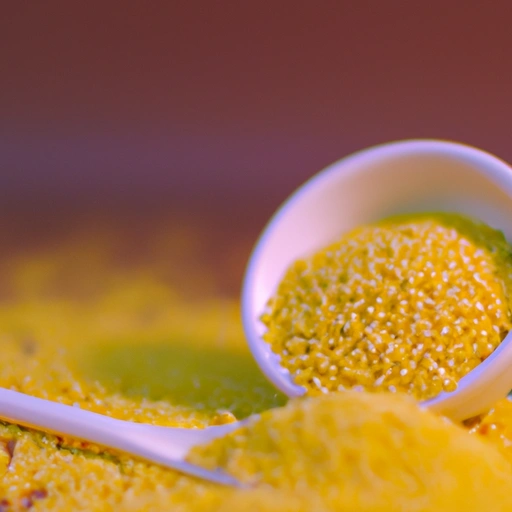Millet
Description

Millet is a tiny, round whole grain that is widely considered a staple food in many parts of the world, particularly in Asia and Africa. It is an ancient grain, believed to have been cultivated for thousands of years, and is prized for its resilience to harsh weather conditions. Millet comes in several varieties, including pearl, foxtail, proso, and finger, each with its unique texture and taste. Its mild, slightly nutty flavor makes it extremely versatile in the kitchen.
Common uses
Millet is commonly used to make porridge, traditional fermented beverages, and as a substitute for rice or quinoa. It can also be ground into flour for use in bread, cakes, and crackers. In some cultures, millet is used to create a flatbread known as 'roti' or to prepare couscous-like dishes. Millet's versatility extends to being popped like popcorn for a crunchy snack.
Nutritional value
Calories
One cup (174g) of cooked millet provides approximately 207 calories (867 kJ).
Protein
A serving of cooked millet contains about 6 grams of protein.
Fat
Millet is low in fat, with a serving containing around 1.7 grams.
Carbohydrates
Carbohydrates in millet amount to roughly 41 grams per serving.
Vitamins
Millet provides a range of B-vitamins, including niacin, B6, and folic acid.
Minerals
The grain is rich in minerals like magnesium, phosphorus, manganese, and trace amounts of iron and potassium.
Health benefits
Millet is a rich source of nutrients and provides several health benefits. It is naturally gluten-free, making it a popular choice for those with celiac disease or gluten sensitivity. The high fiber content aids in digestion and may help in managing blood sugar levels. Millet is also heart-healthy due to its magnesium content, which can help reduce blood pressure and the risk of heart attacks.
Potential risks
While millet is generally safe for consumption, it should be eaten in moderation. This is because it contains goitrogens, which may interfere with thyroid function if consumed in large quantities, especially in people with pre-existing thyroid disorders.
Common recipes
Millet is a versatile ingredient that can be used in a variety of recipes, including salads, soups, and stews. It is often used as a nutritious addition to breakfast bowls or as a base for veggie burgers.
Cooking methods
To cook millet, use about 2 cups (473 ml) of water for every 1 cup (around 200g) of millet. Bring the water to a boil, add the millet, reduce the heat, cover, and simmer for 20 minutes until the grains are fluffy.
Pairing with other ingredients
Millet pairs well with vegetables, beans, and legumes, making it an excellent addition to vegetarian and vegan dishes. It also complements sweet flavors in desserts and breakfast items.
Summary
Millet is a nutritious, gluten-free grain with a rich history and a wide range of culinary applications. Its resilience as a crop makes it an important food source across the globe. Millet's health benefits and versatile nature make it a valuable ingredient for those looking to diversify their diet with whole grains.